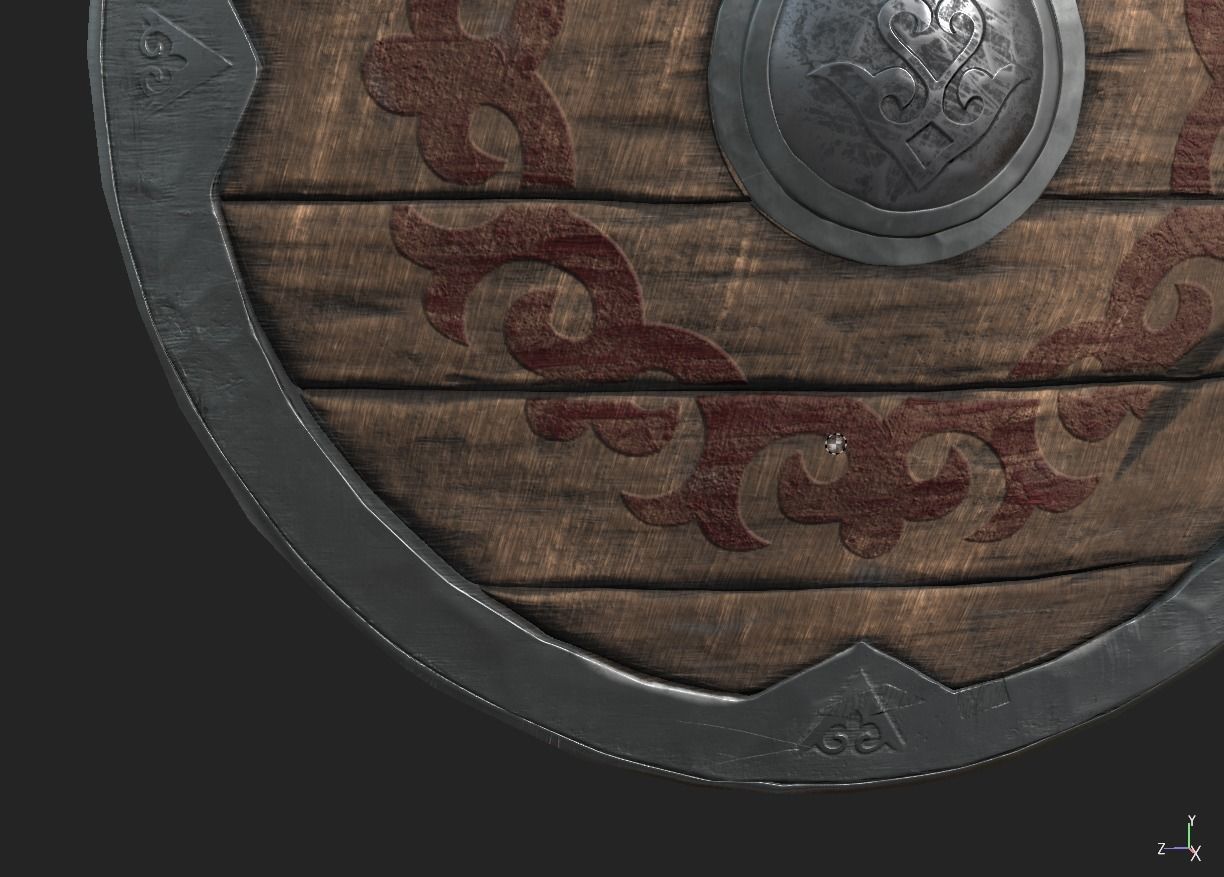
Nomad Shield Low-poly 3D model
- Heeeeeyyym guys! This is my Nomad`s shield (Kazakh). After a long break? decided to make a shield, not just a shield of nomads! A military shield made of wood and metal for self-defense of nomads. Stylized shield and low poly, perfect for your game of any genres. Optimized.Ancient nomads with mother’s milk absorbed the unshakable truth: you can lose wealth, property, but not your land. The Kazakhs were peaceful people, they did not attack, they only defended their homeland from enemy raids. Therefore, it is not surprising that in the Great Steppe, weaponry was developed. The warriors were protected by the Kalkan shield, Sauyt armor and the Dulig helmet. The latter were the most diverse in their form - with a visor and a notch in silver, with a mesh and a leather ornamented cover. The weapons of the nomads have always been the subject of close attention of researchers. We can find information about it in the works of medieval historians: Ibn Ruzbikhan, Rashid ad-din, M.Kh.Dulati, Mahmud Kashgari, Yusuf Balasagunsky and others, travelers: Plan Karpini, Wilhelm de Rubruk, Marco Polo. Information about Kazakh weapons is contained in the heroic epics Kambar-batyr, Alpamys, Koblandy batyr and other folklore-epic works. One of the researchers who first undertook the study of Kazakh weapons with the position of an integrated approach was Ch.Ch. Valikhanov. The history of the development of the weaponry of the Kazakh people is the history of the development of the nomadic civilization of the Great Steppe, its culture and unique identity. It has more than one millennium. Weapons craft went hand in hand with man, allowing him to expand his horizons.
The main features of the development of culture, art and art among the steppe peoples have long been determined by the needs of nomadic life. For the manufacture of military weapons, Kazakh gunsmiths used products obtained from their own cattle breeding, as well as raw materials and natural materials extracted in Kazakhstan. These are ferrous and non-ferrous metals, precious stones and wood, bone and horn, leather, tendons and horse hair. These materials, in accordance with their physical properties and processing technology, were used for the manufacture of various functional and structural parts and elements of military weapons. The shields of the Kazakh warriors were mainly used only in a round shape. They were most convenient for the rider and did not constrain his movements. Shields were made of leather and copper. The dimensions were relatively small, about 70 centimeters in diameter. The thickness of the leather shield along with the felt lining reached 2-3 centimeters. On the front side of any shield there were four metal - copper or steel - cones up to 3 meters high and at least 2 centimeters thick. They were attached to the base of the shield with powerful rivets and served as reliable protection against saber attacks.
A trained warrior, tilting the shield at the right angle to the strike of the saber, had the opportunity to disarm the enemy. The saber blade, having stumbled upon one of the shishaks, broke in half. The inner side of each shield was equipped with four rings, by means of which the shield was fastened with braid to the rider's left elbow, besides this, Kazakh gunsmiths covered the inside of the shield with felt for additional protection, which did not allow the tip to dig into the body, and the sword, at the same time, continued to remain light and mobile.Thus, the Kazakh sarbaz had five main types of traditional armor, differing in the method of creating a protective property - the booking method. This is scaly armor (kөbe sauyt), ring armor (kіrіuke sauyt), plate armor (beren sauyt), quilted armor (қattama sauyt), cuirass (zhananat sauyt).Iron and bulat were the main materials used to make weapons, more rarely copper, bronze, silver and gold.Damask steel in the Kazakh language was called almas. The Kazakhs distinguished two varieties of almas - red (“Kyzyl almas”) and white (“ak almas”). According to folklore data, saber blades, swords, spearheads, spades, armor, helmets, and shields were almazed from diamond. The model of the bow and arrow among the Turkic peoples, like a talisman, was attached to the clothes and to the cradle of the boy. According to traditional ideas, this amulet gave the child strength and courage.Until the middle of the 19th century, Kazakhs in the dowry of the bride necessarily included rich examples of weapons and defensive weapons (shell, shield, bow).











